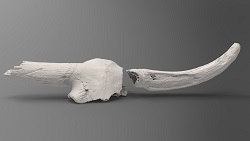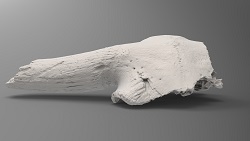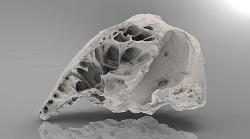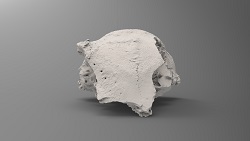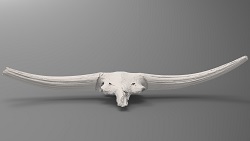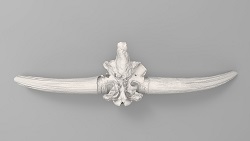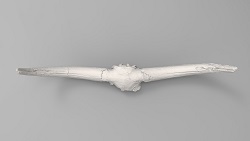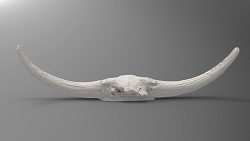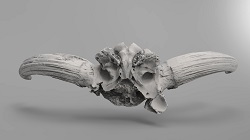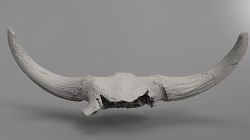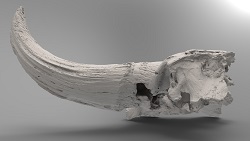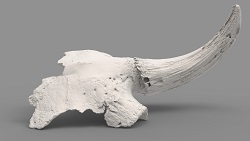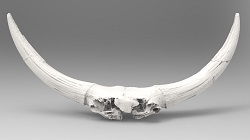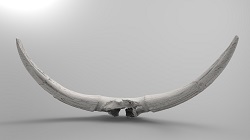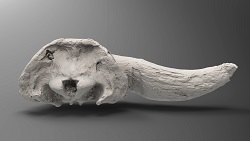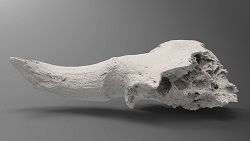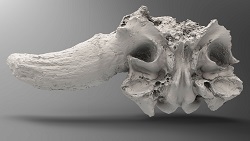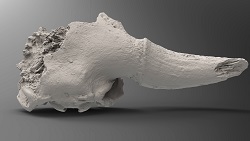About
The Bison Digitization Project, funded by the U.S. Bureau of Reclamation, creates an open-access digital archive of fossil Bison that roamed eastern Idaho during the Ice Age. This digital collection includes 250 three-dimensional models of some of the most important and complete fossil bison in North America that are curated by the Idaho Museum of Natural History in Pocatello. We encourage visitors to explore our digital collection for education, research or just to reconnect with our amazing history.
Additional information about the Bison Digitization Project can be found on the U.S. Bureau of Reclamation website.
Featured Specimens
Bison latifrons "Mary Lou"
About “MaryLou” is the signature specimen of the Idaho Museum of Natural History’s fossil collection and among the finest complete Bison latifrons skull ever discovered. Collected in the fall of 1954 by Mary Kitaj and Louis Dellaporte - from whom the specimen takes its name - Mary Lou was molded and cast in 1985 allowing it to become the most widely exhibited and recognized Ice age bison skull in the world. View Specimen Details
Bison latifrons "Junior"
About “Junior” was discovered by Marie L. Hopkins, Dr. William Kitaj, Mr. B.A. DeVere Bailey, and student field researcher, Robert Hartvigsen around 1949. Prior to the discovery of MaryLou in 1954, Junior was the most complete skull of Bison latifrons in existence. Though subsequent discoveries of ice age bison have provided a more complete record of these enormous Pleistocene mammals, Junior still remains one of the best preserved fossils of Bison latifrons ever recovered and among only a handful of complete skulls in the world. View Specimen Details
Bison latifrons "Howie"
About “Howie” was recovered by and subsequently named after Howard Emry who discovered the specimen with a Museum Field Party in August of 1975. The cranium and 77 associated elements make Howie the most complete Bison latifrons skeleton curated at the Idaho Museum of Natural History. View Specimen Details
Bison latifrons
About Described as being distinctly female, the cranium and associated skeleton was discovered by Mark Johnson in April, 1974. View Specimen Details
Bison alaskensis "Fourth of July"
About Called the “Fourth of July Bison,” this cranium with some associated skeletal elements was discovered by Marie L. Hopkins on July 1, 1957. View Specimen Details
Bison Latifrons "Haroldine"
About “Haroldine” was originally nicknamed “Harold the Hair-lipped Bison” and was discovered by H. Gregory McDonald on September 13, 1970. The cranium and associated partial skeleton was originally described as male due to the size and thickness of the post cranial elements, but recent research suggests that it is most likely a very large female. View Specimen Details
Bison latifrons "Whit"
About Nicknamed “Whit” after Pocatello High School Zoology teacher Wayne Whitlow who, along with student, Woodrew Benson discovered the fossil in the Fall of 1933. It is the very first Bison latifrons specimen ever recovered in the state of Idaho. View Specimen Details
Bison latifrons "Humpty Dumpty"
About “Humpty Dumpty” was collected by Marie L. Hopkins on October, 1969 near American Falls, Idaho. This partial cranium boasts the largest set of horn-cores ever discovered on a Bison latifrons, leading some researchers to suspect that it may represent an undescribed ecotype or perhaps a different species altogether. View Specimen Details
Bison alaskensis "Stanford"
About “Stanford” is a cranium with horn-cores discovered by Professor C.W. Greene of Stanford University in 1894. Nicknamed “Stan” or “The Stanford specimen” was first mentioned in an 1899 publication by F.A. Lucas and represents the best confirmed Bison alaskensis specimen curated at the Idaho Museum of Natural History. View Specimen Details
Bison priscus
About Cranium with right horn-core, discovered by an Idaho State College Field Party on September 21, 1955, is perhaps the best example of Bison priscus in the collections of the Idaho Museum of Natural History. View Specimen Details
Bison latifrons
About A female B. latifrons that is thought to be a juvenile based on the lack of fusion in the skull bones. View Specimen Details
Bison alaskensis
About This Bison is from the Dam Local Fauna, which has a Carbon-14 date of 26,500 +/- 3,500. It was originally identified as Bison alleni, but there is some debate that it may be Bison alaskensis. View Specimen Details
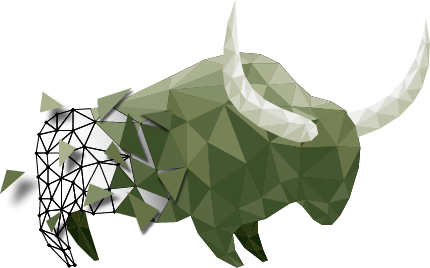

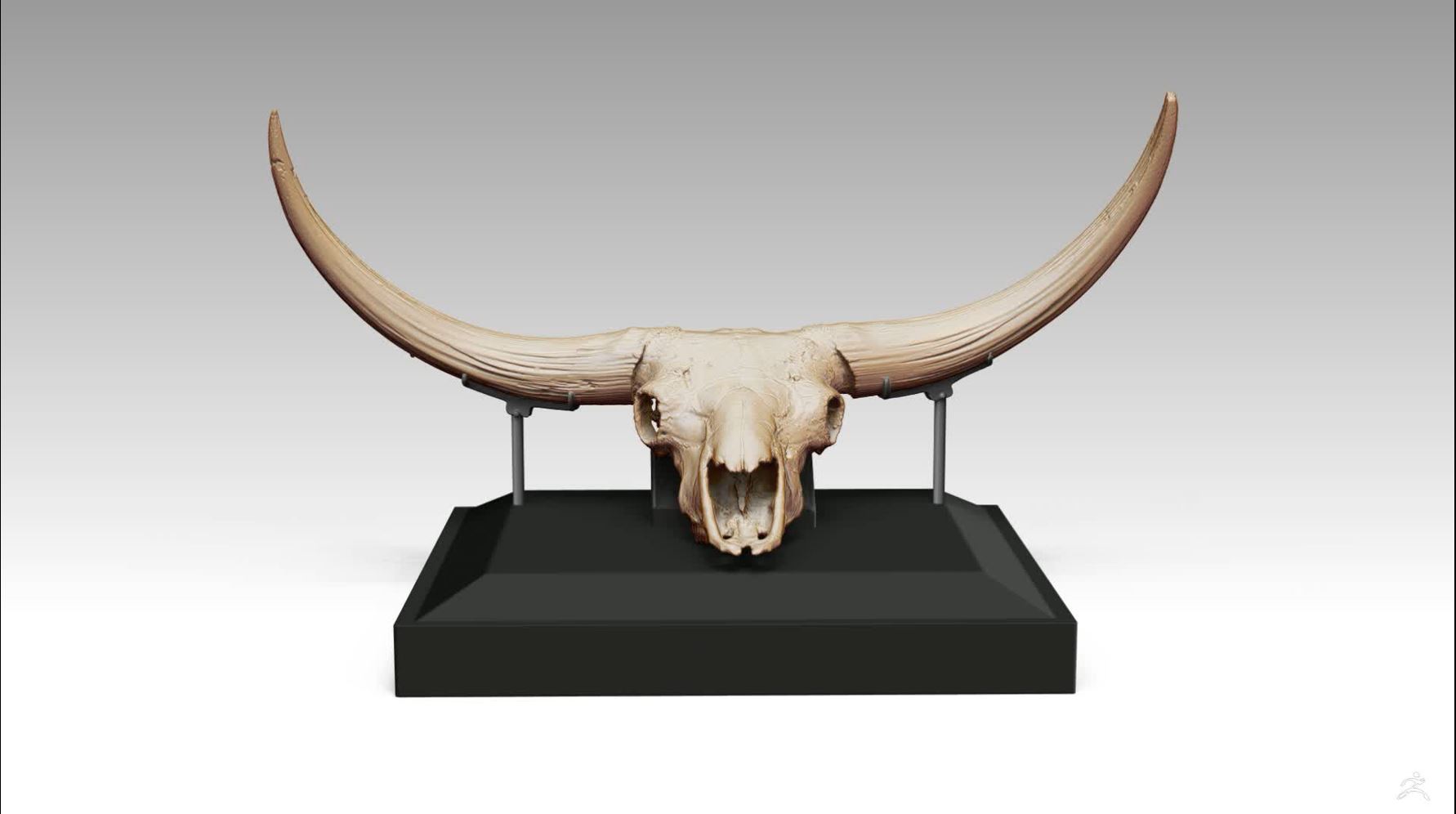
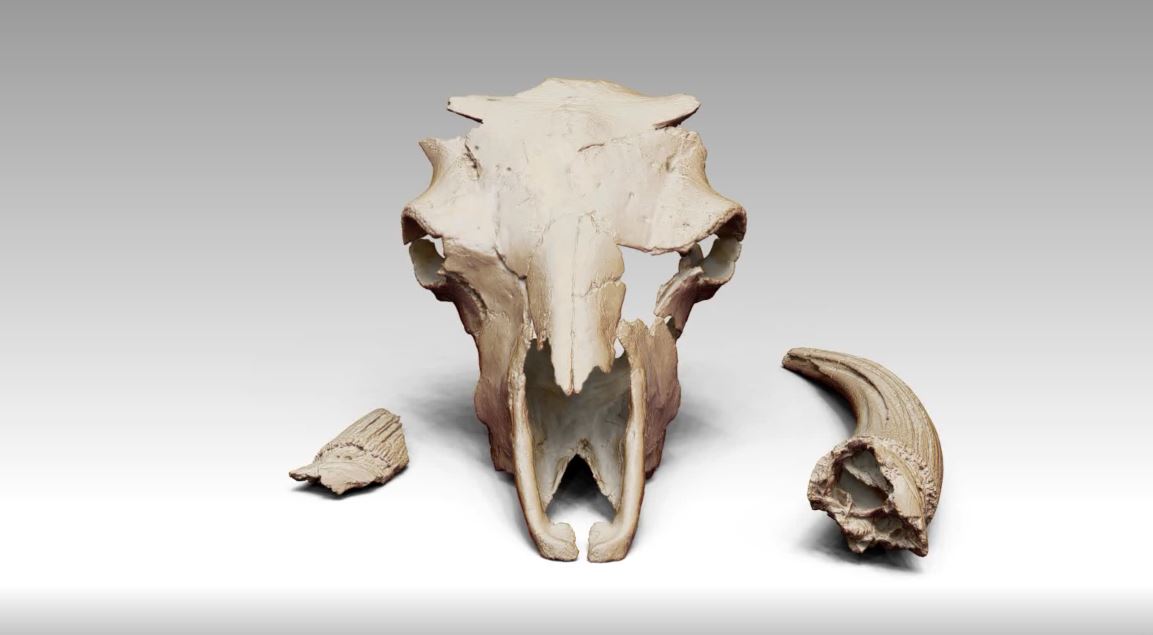
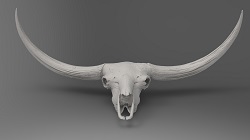
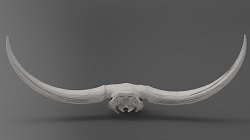
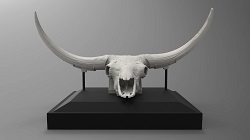
.jpg)
.jpg)
.jpg)
.jpg)
